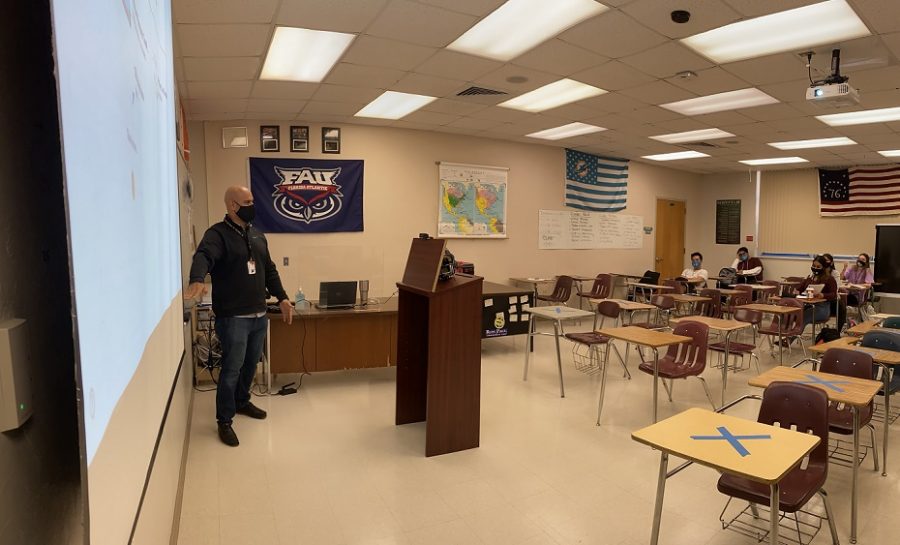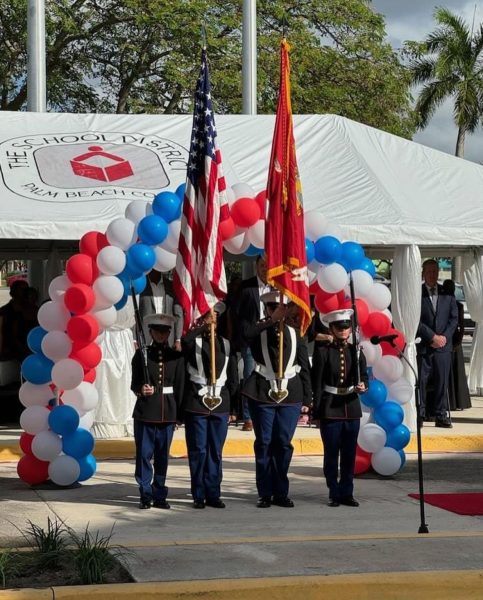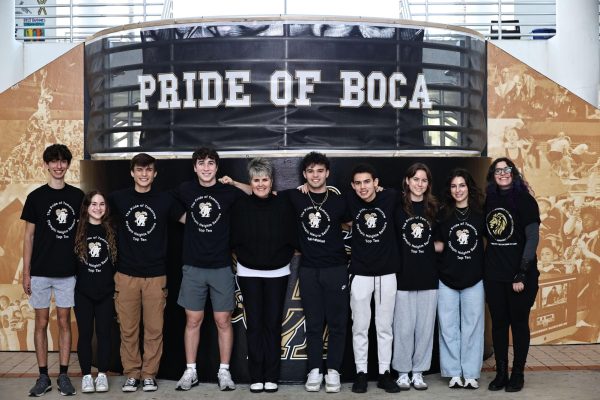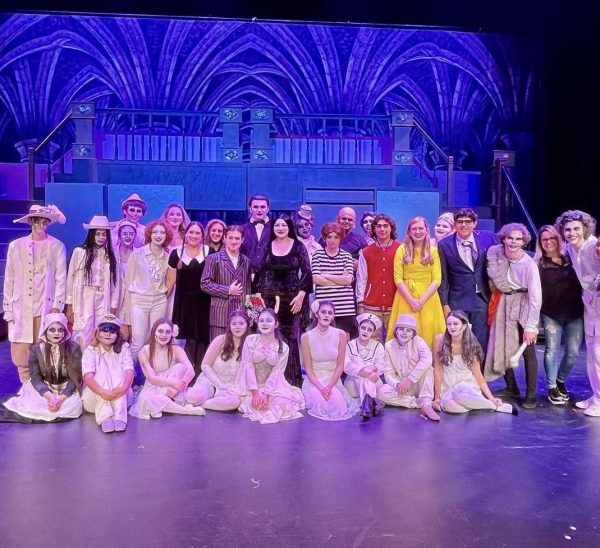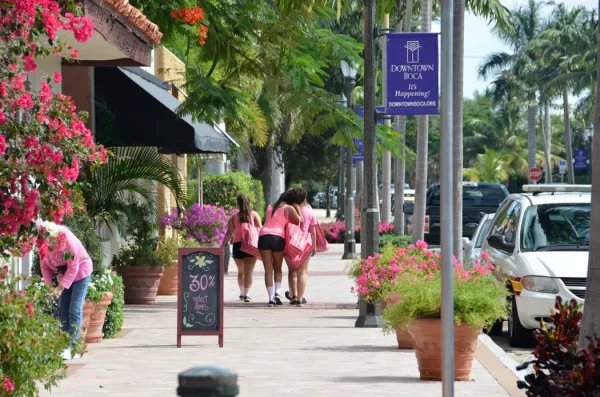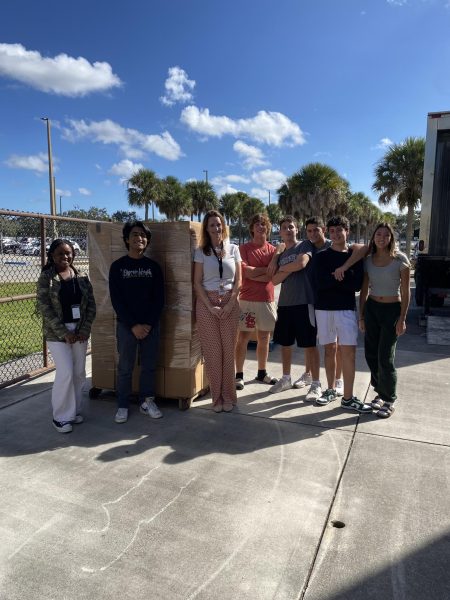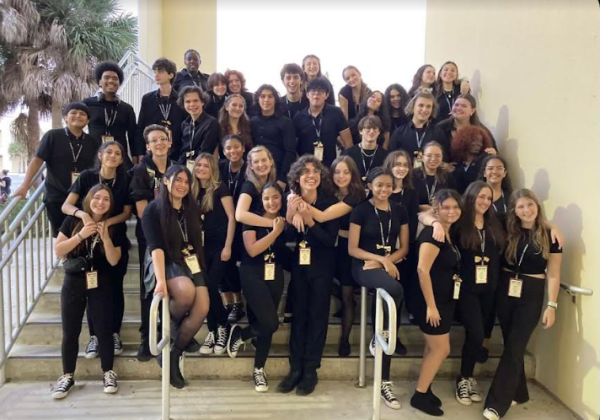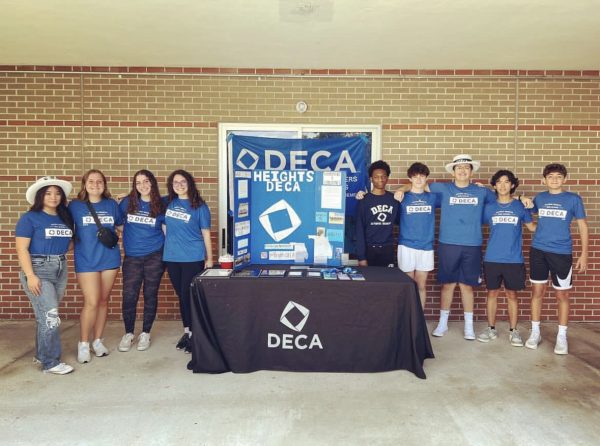Teachers have differing perspectives on the return to campus
Olympic Heights social studies teacher Mr. Carlos Ramon, seen here teaching his fourth period class, was happy to return to campus to interact with students and other faculty in person.
Coming to school amidst a pandemic that has complicated the lives of many is a tough choice to make. Even with Covid-19 positive tests results on the rise again in most every state, including Florida, there is also a deep longing for life to return to what it once was for many students and teachers.
Much attention has been paid to the decision parents have made and are continuing to have to make regarding whether to send their children back to school for in-person instruction or to keep them home in virtual learning mode.
An aspect that is often overlooked by students and parents is how the teachers must feel with the complications being created by the complexities of educating teens during such life-altering events.
Teachers have had to adjust their long-developed curriculum for online instruction, as well as making their own adjustments in their personal lives. For some educators, the thought of having to come to a school full of hundreds of kids may be a thought that is nothing short of unpleasant. While a majority of students are relatively healthy and have strong immune systems, the same can’t be said for some teachers.
Some teachers with underlying conditions that make them more susceptible to catching the coronavirus have been granted permission by the school district and the Olympic Heights administration to teach their classes remotely from home. Other teachers have taken a leave of absence and some have even left the profession of teaching as a result of the Covid-19 threat.
Most OH teachers, however, are back on campus simultaneously teaching the small number of the students who have returned to in-person instruction and those students who are remaining in distance. Precautionary rules and changes have been put in place for the safety of everyone at OH, but how do the teachers truly feel about this experience?
OH social studies teacher Mr. Carlos Ramon is glad to be back on campus, saying, “I feel excited! [I was] looking forward to getting back to school and building on relationships with students and staff members.”
It can be assumed that many people who have not found comfort within the new day-to-day adjustments of living in a pandemic may sympathize with the points Ramon makes. The social aspect of the lives of many is very prominent and impactful; additionally, being educated can feel easier when it is with a teacher you have met and developed a more solid bond with.
On the contrary, some teachers may have more restricting issues in their life that make it difficult to be comfortable with teaching at this time. A poor immune system can make all the difference in what people will allow themselves to do during this time of great change. Long-time OH art teacher Ms.Jane Tobal has a very different, yet very much valid, input on the situation.
While Ramon embraces the idea of returning to school with open arms, Tobal has shared how her personal life has affected her thoughts, saying, “I am not ready to go back live to school. I have some serious health issues that make it very risky for me to go back live at this point. I miss seeing my students, but it isn’t worth risking my life.”
While the personal lives of Ms.Tobal and Mr.Ramon have caused a difference in their thoughts about the return of roughly 500 students, they are both in agreement that the school has been proficient with safety measures put in place. “I believe our school is better prepared than most when dealing with this learning alternative,” Ramon explained.
“I feel that the administration is doing absolutely everything they can to ensure the safety of those that are choosing return to the school buildings,” Tobal adds, “but it appears that it is only going to work because so many students have chosen to stay at home and continue virtual schooling.” While Tobal believes that everything that can be done in this situation has been done, she makes the very strong point that it would not have worked out well if a significant amount of students beyond the current amount had decided to return.


